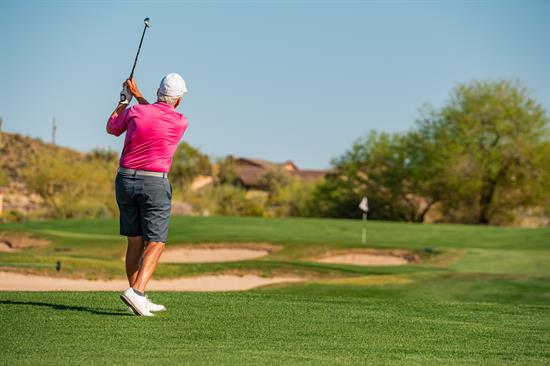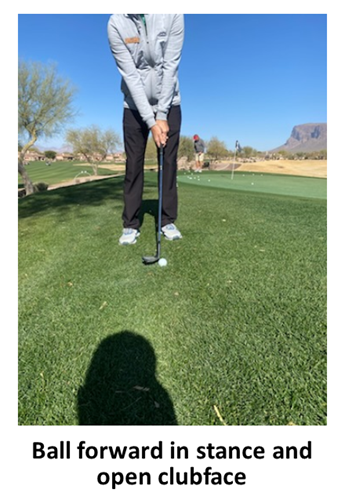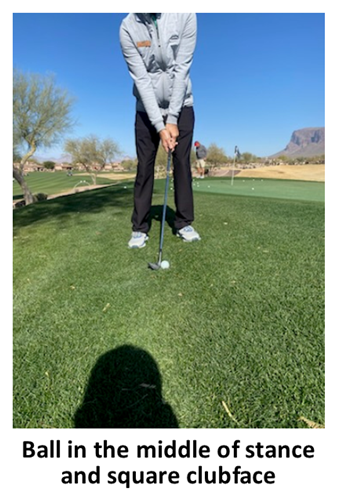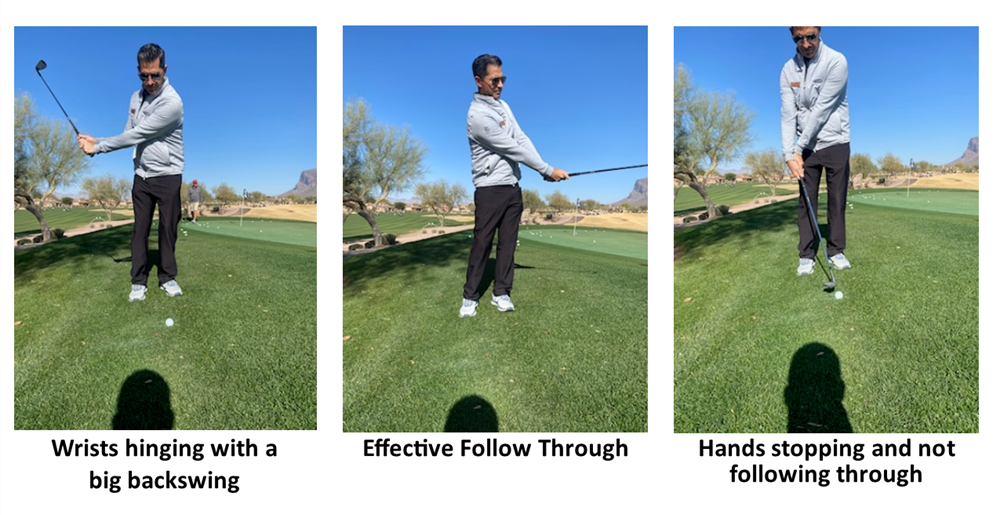Golf Short Game - Highs and Lows

Dan Williams, PGA professional and Superstition Mountain golf instructor, is back with more tips and today, he’s tackling the short game. While a strong, long drive is always impressive, a hole can be won or lost with a wedge and putter.
Here’s what Dan has to say about the highs and lows of your short game.
Controlling where your ball stops on the green is the goal of every short game shot. Traditional golf wisdom says to keep the ball flying low if you can because it is a safer shot, less can go wrong. But, especially on firmer greens, a low ball flight will roll quite a bit, making it difficult to stop in the right place. So, we have to turn to a higher shot so the ball will stop sooner and closer to the hole.
The Highs
In most situations, to hit the ball high you’ll want to choose a high-lofted wedge, a 58 or a 60 degree wedge is best. Start with a standard set up where you play the ball in the middle of your stance and keep the clubface square to your target line. This set up will assist in making solid contact and the loft of the club will hit the ball high enough for most situations.
But … some situations require an even higher ball flight. In this case, take that high-lofted club and make two set up adjustments: play the ball forward in your stance and open the clubface. Both of these adjustments will increase the effective loft of the club at impact and hit the ball higher.

The Lows
Many golfers will set up every short game shot by opening the face and putting the ball forward in their stance. The problem is, these adjustments expose the leading edge of the club to the ball, making solid contact much more difficult to achieve. If you’ve ever bladed a ball over the green, you know what this feels like! You’ll be much better off playing the ball in the middle of the stance with a square face. The ball might not fly as high as it could, but solid contact that rolls too far is better than hitting another shot from off the green.

The Swing
One of the biggest reasons contact can be harder to achieve is that it requires a surprising amount of speed. If you make a small/slow swing with a lot of loft, the ball won’t fly far enough. When golfers take a bigger backswing near the green, they will often slow down - or decelerate - into the ball. This is the biggest cause of a bladed shot or a chunk shot.
To hit this shot, start by making sure you’re following through and not stopping at the ball. This can be scary if you don’t have this shot, but you might be surprised how big you can swing without the ball flying too far. You might also try to let your wrists hinge freely in the backswing, this will help create enough speed without making a huge backswing.

The Boring Stuff
The high shot around the green is often not the right play. Keeping the ball low is safer AND often more likely to be successful. Hitting a low chip shot or even putting from well off the green will often produce the best results. Many golfers think this is weakness in their game, but the safer option can be the better option in a lot of situations.
But, safe isn’t always going to be the better option and sometimes, you really want to hit it high.
Hopefully these tips will come in handy when the risky shot is the one you just gotta take.
Take the next steps to mastering your game on the green with these blogs: Choosing the right putter for your game and 5 extremely effective putting drills. Members of our Arizona private golf club can login to their membership page or connect with the team at the Golf Shop to schedule a lesson with Dan or join one of his popular clinics.


